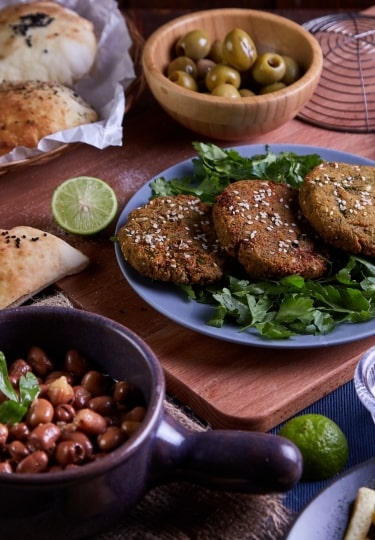Egyptian food is not as well-known as that of many of its Mediterranean neighbors, despite sharing many of the same ingredients. That’s partly due to the country being largely desert, which did not in the past encourage flamboyant cookery; food was more about nutrition, practicality, and availability of ingredients.
However, the resulting simplicity of Egyptian cuisine is part of its appeal, with fresh, basic ingredients used well. It’s also very healthy, with plenty of vegetables, and chicken or lamb preferred to richer meats.
In Alexandria, you will also find plenty of fish and shellfish. Spices are used in moderation, with cumin being the most common.
Here are some of Egypt’s most popular dishes to give you a flavor of what to expect.
Ful Medames
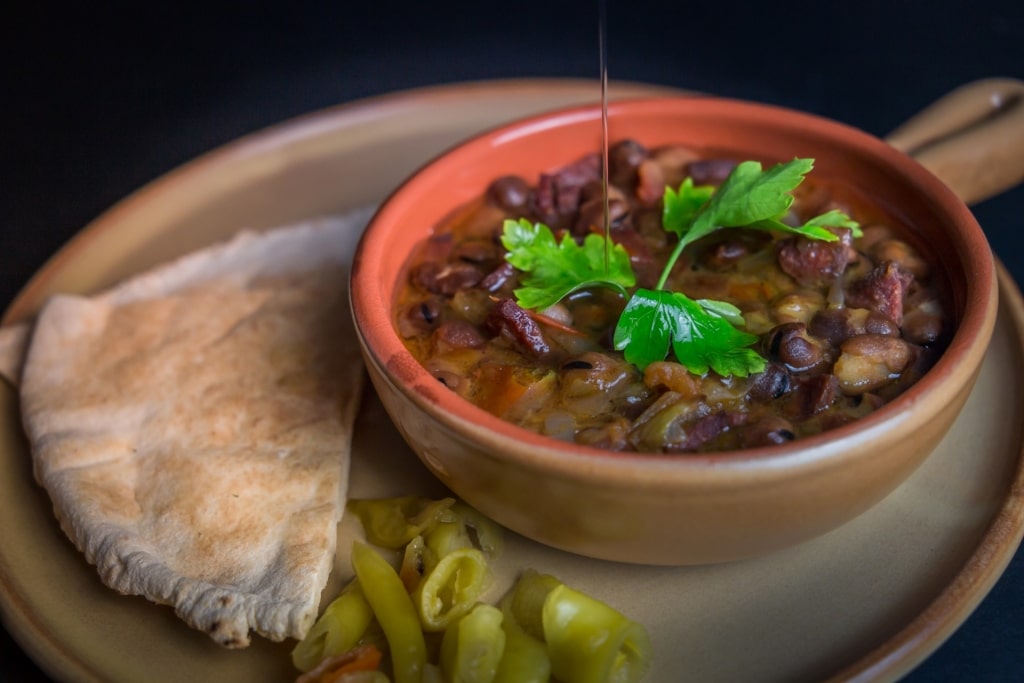
Ful medames
Ful medames is a traditional Egyptian breakfast, a form of stew made with fava beans. These beans are slowly cooked and flavored with chili, peppers, garlic, and lemon juice.
The dish’s name means “buried beans”, referring to the way the dish was once made. Water and beans were left overnight in a pot under the embers of a fire so as to be ready for breakfast.
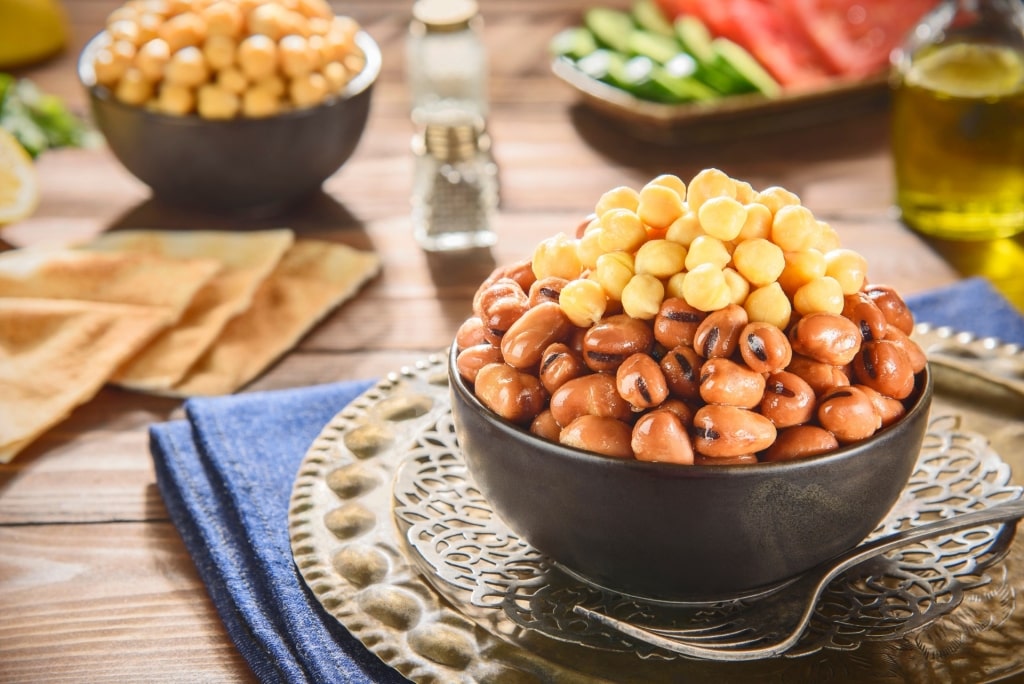
Fava beans
Fava beans have been found in Egyptian tombs dating back almost four thousand years, so the roots of ful may be very ancient indeed. From Egypt, it has since spread throughout North Africa and the Middle East.
Traditionally, it is served from a metal jug, from which it is poured onto a plate. The stew is eaten with fresh baladi bread, which is great for wiping up every last morsel.
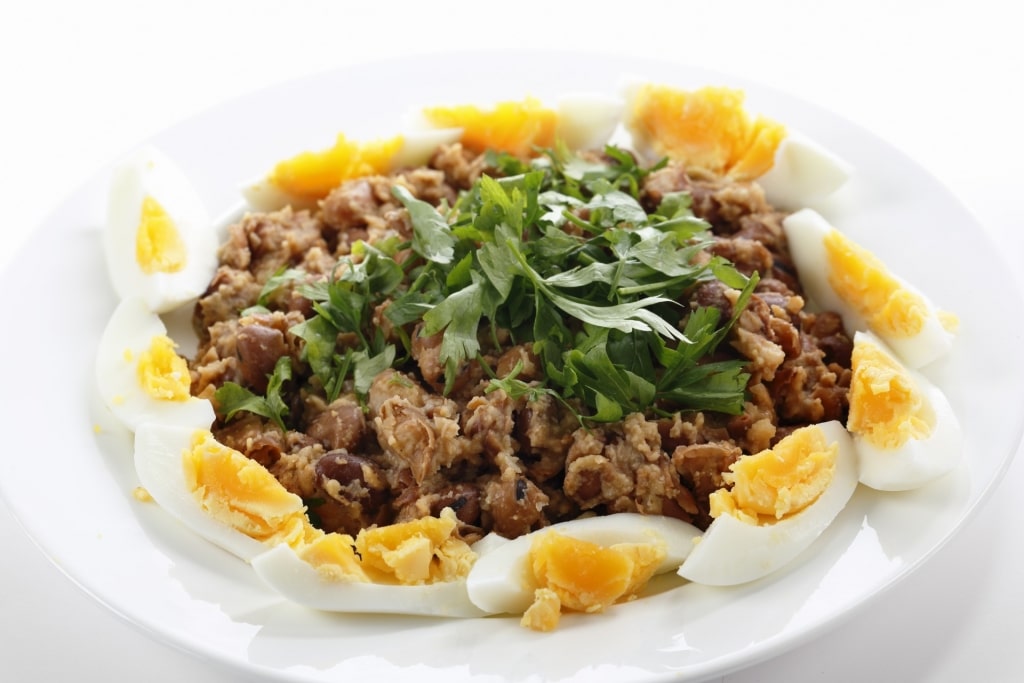
Ful medames
To add even more flavor, there are sides of parsley, chopped onion and tomato salad, and pickled beets. Pastrami or sausage, ta’meya, and boiled or fried eggs are other options.
Eggah
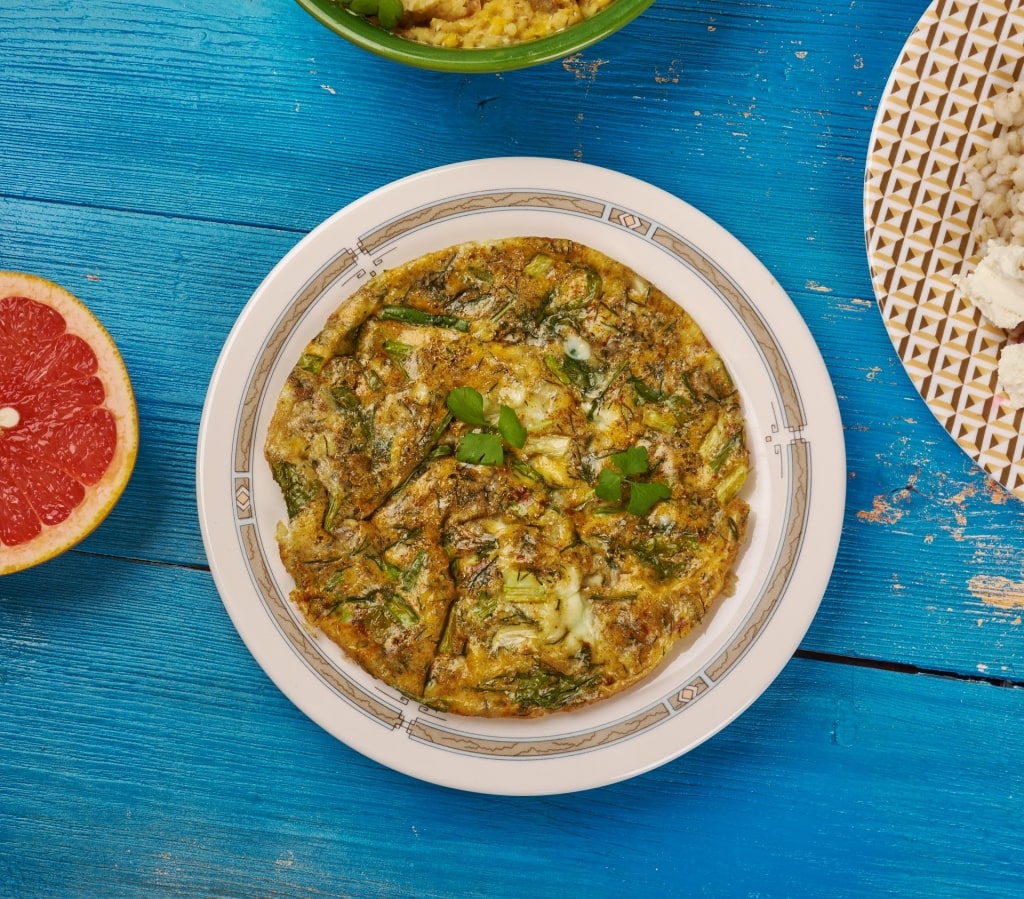
Eggah
This thick omelet is filled with ingredients such as spinach, tomato or peppers. In Egyptian cuisine, it’s the equivalent of the Italian frittata or Spanish tortilla.
Its main difference is the spices and herbs used for flavor. Egyptians are very fond of using spices such as cumin, cinnamon, turmeric, nutmeg or coriander, but even raisins might make an appearance.
The filling—and flavoring—is really up to the imagination of the cook. It’s baked in a round pan in the oven, then served in thick slices.
Like an omelet, this is traditionally Egyptian breakfast food. However, it can also be served for lunch, or in the evening, perhaps—literally—beefed up with ground meat.
Read: 12 Best Things to Do in Alexandria, Egypt
Mezze
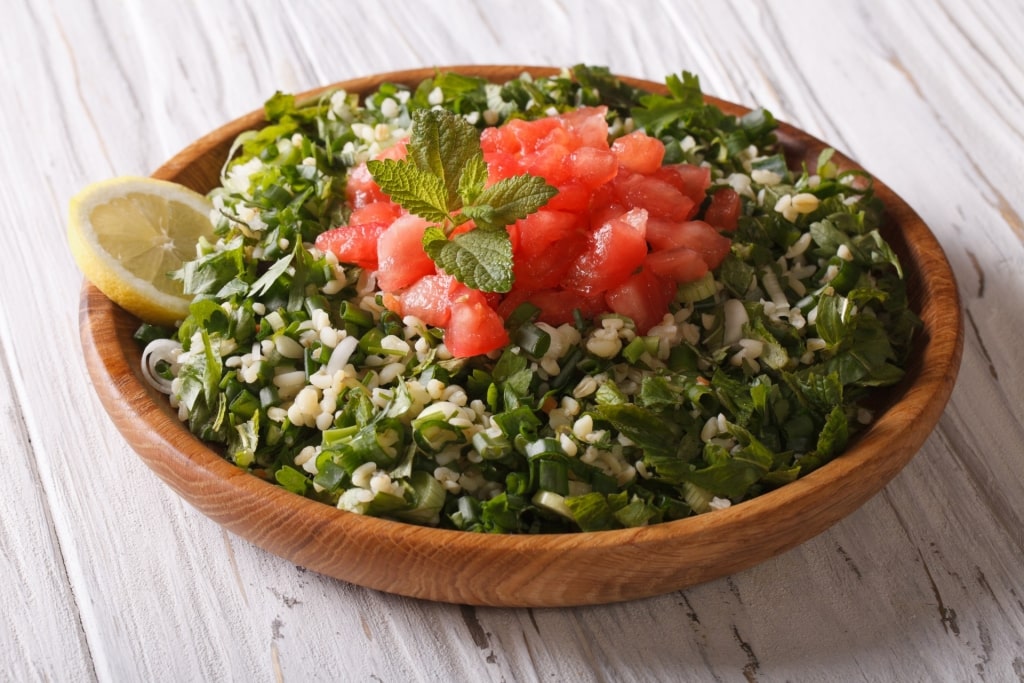
Tabbouleh
Mezze is the Egyptian word for a collection of small plates, similar to Spanish tapas. Popular choices include hummus, tabbouleh, baba ganoush, zabladi, falafel, and bread.
Hummus probably needs no introduction, and tabbouleh has also become very popular outside its home of North Africa. It’s a simple salad of chopped tomato, onion, bulgur, and mint, tossed with a lemon and olive oil dressing.
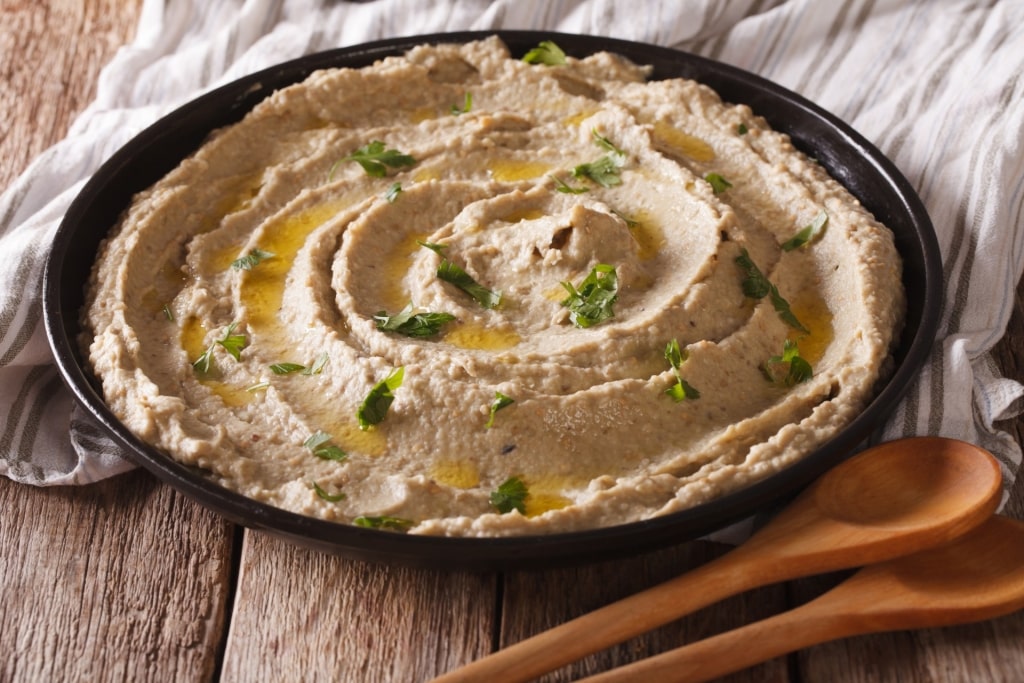
Baba ganoush
Baba ganoush is blended eggplant, which is first scorched over an open flame to give it a smoky flavor. After subsequent baking, the insides are then scraped out and mixed with lemon juice, olive oil, crushed garlic, tahini, and a touch of chili.
It’s a popular dip for vegetarians, delicious with fresh, warm bread. As well as in mezze, you will also find it served as a side with main courses with meat or fish.
Zabladi is a simple, refreshing mix of diced cucumber, yogurt, fresh mint, and perhaps a touch of garlic. It’s a lovely light dish for a hot day.
Ta’meya
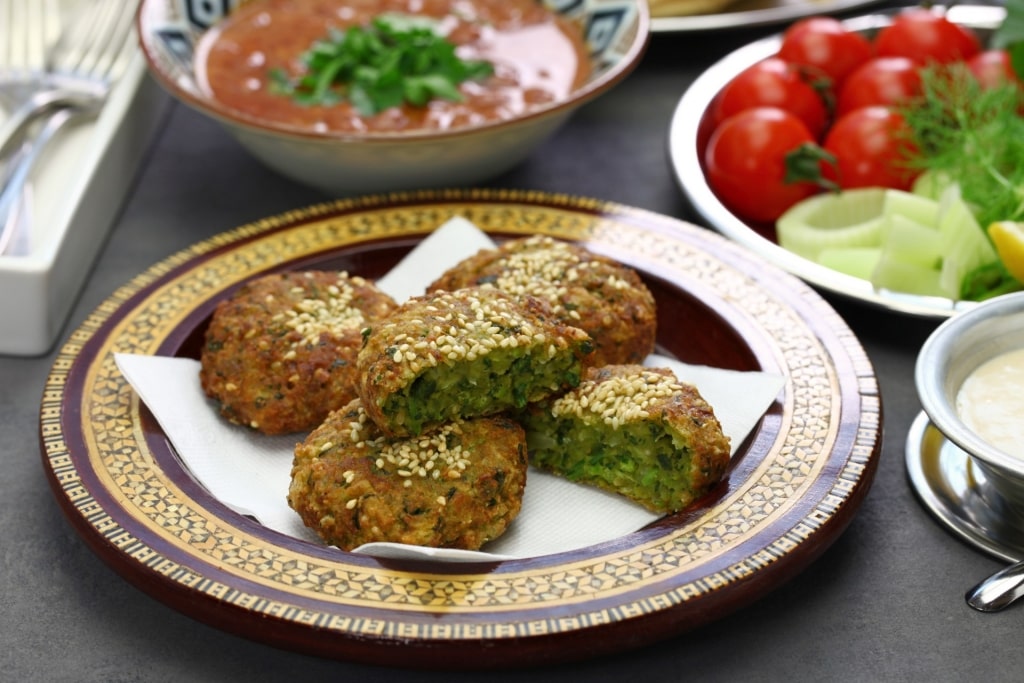
Ta’meya
This Egyptian form of falafel is made with fava beans, unlike the better-known version based on chickpeas, or garbanzo beans. Another difference is that ta’meya is shaped into a patty, rather than a ball.
However, the cooking process is very similar. For ta’meya, the beans are boiled, then crushed with onions and/or garlic, cumin, and fresh coriander and parsley.
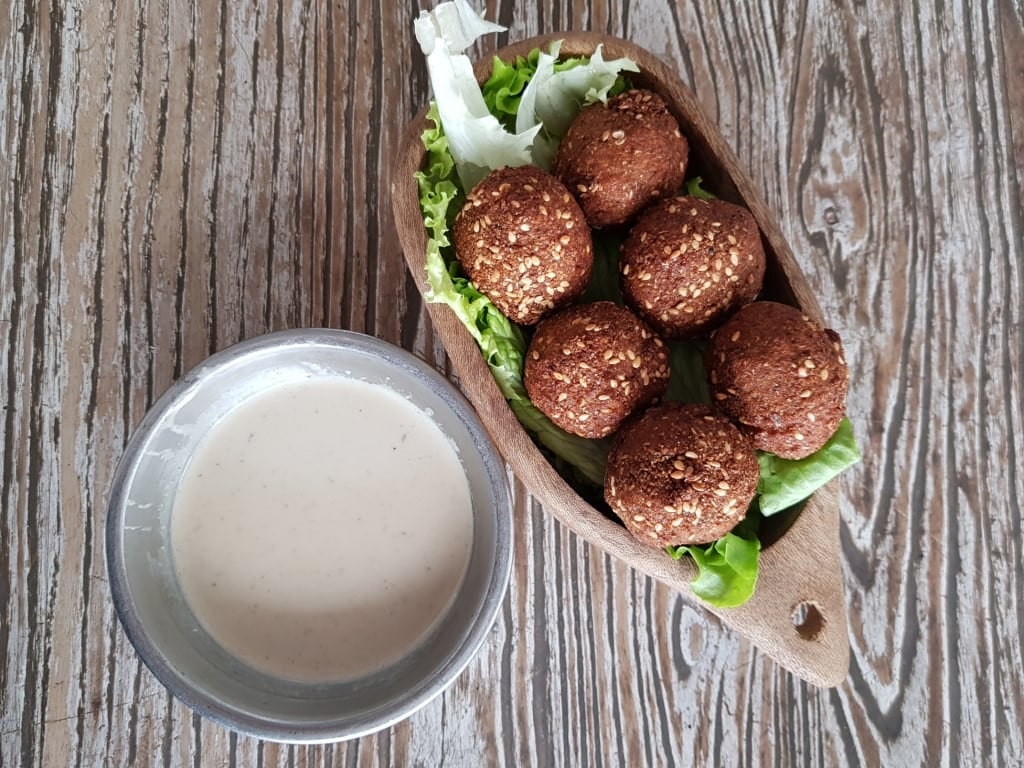
Ta’meya
Before frying in oil, they are sprinkled with sesame seeds. The result is a delicious crisp exterior, covering a vibrant green interior.
Egypt lays claim to pioneering this popular street food, saying they predate falafel. Eaten all year round, ta’meya is a particular treat for breaking fast during Ramadan.
Just like falafel, it can be eaten in a warm baladi bread wrap, served with vegetables and a mint yogurt sauce. It is also common at breakfast with ful medames.
Tahini
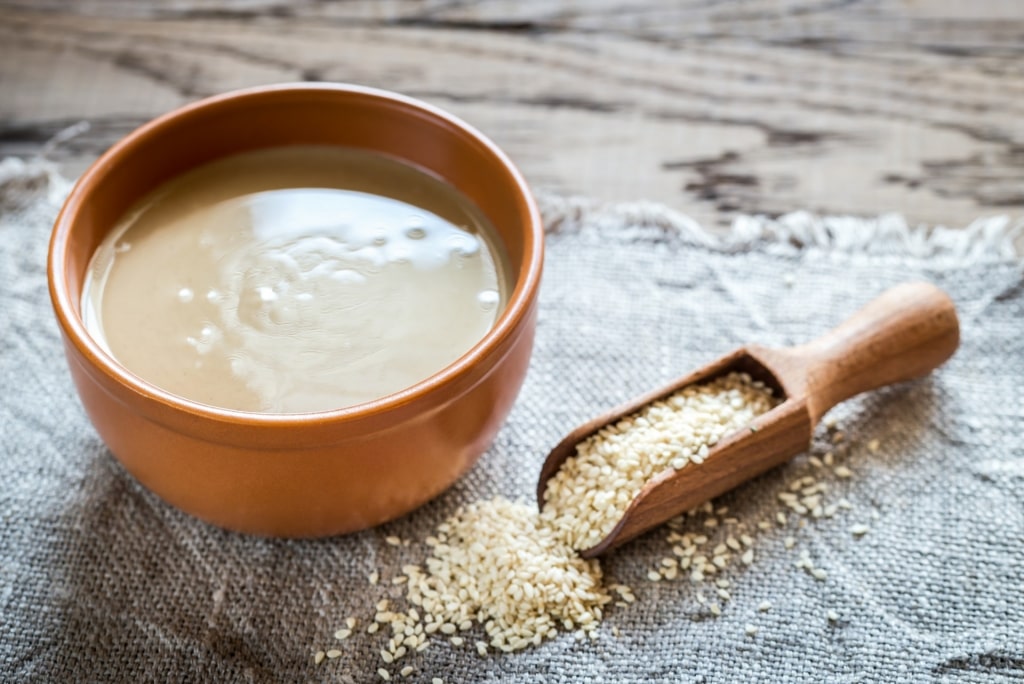
Tahini
Tahini is such a key ingredient in Egyptian cuisine that it needs a special mention. This paste made from creamed sesame seeds makes its way into all kinds of dishes.
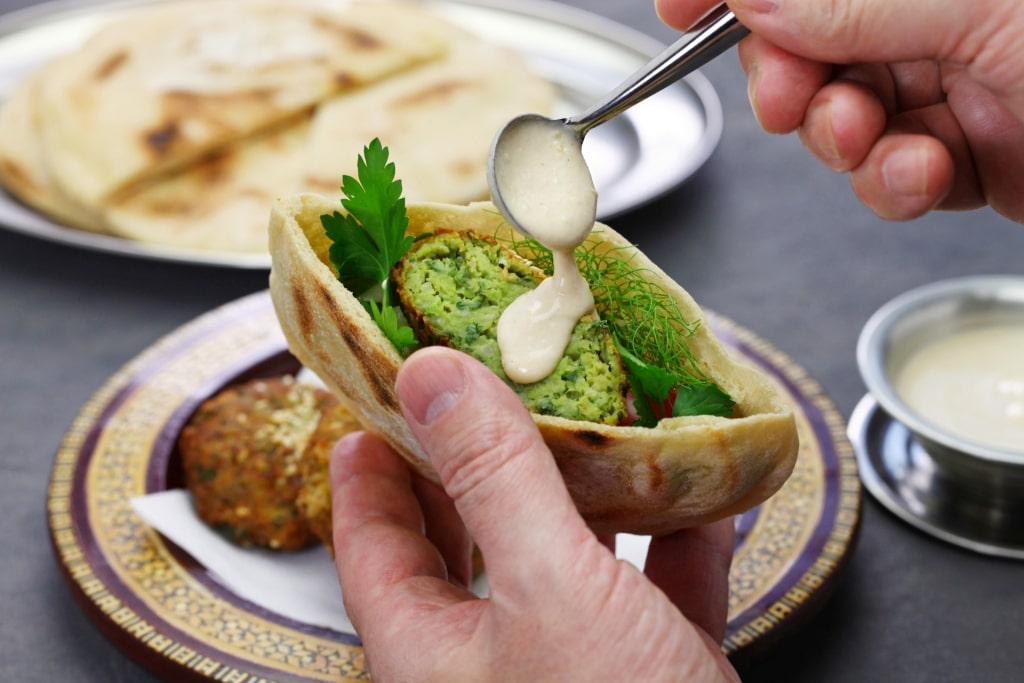
Tahini
While somewhat tasteless by itself, tahini brings a creamy boost to dips such as baba ganoush, or hummus. For a simple salad dressing, it’s softened with lemon juice and garlic before being added.
Tahini also turns up in halwa (also spelled as halva), the popular Egyptian sweet that is eaten from breakfast to supper. The paste is mixed with sugar or honey, nuts, and flavored with vanilla, rose water, or almond—among many other variations.
Aish Baladi
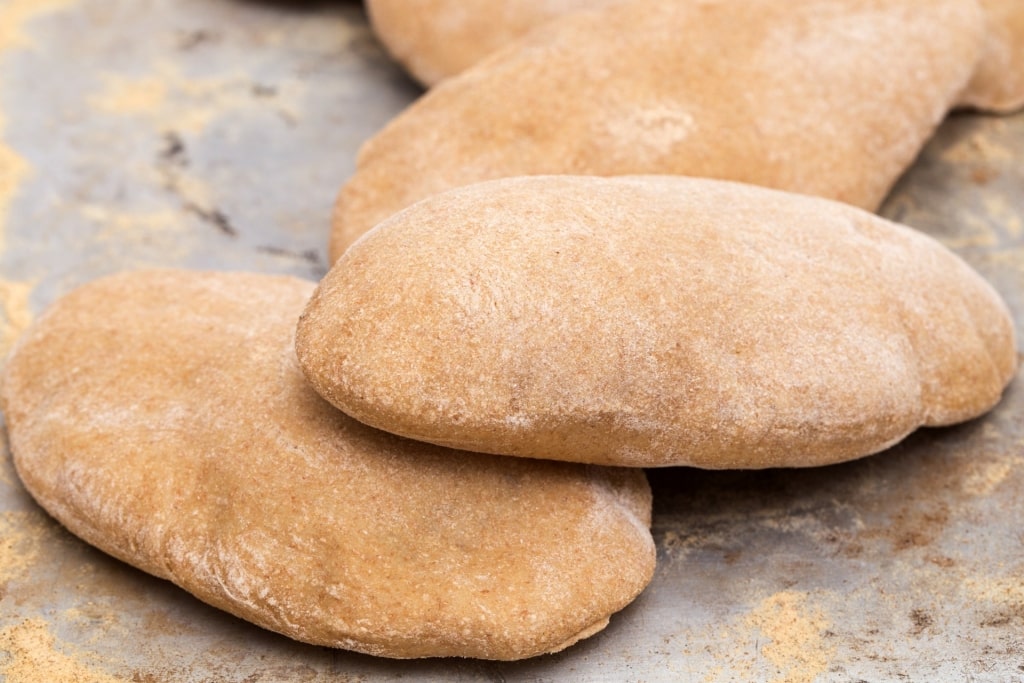
Aish baladi
Meaning “bread of life”, aish baladi’s place in Egyptian life cannot be overstated. The cost of bread has been subsidized by the government since 1949, and unrest has met attempts to raise its price.
Baladi is a flat bread made with 100 percent wholewheat and bran. Traditionally baked in a wood-fired oven, it’s now also mass-produced in commercial ovens.
With its chewy exterior and large air pocket inside, baladi looks very like pita. However, because of that wholewheat base, it is much more nutritious.
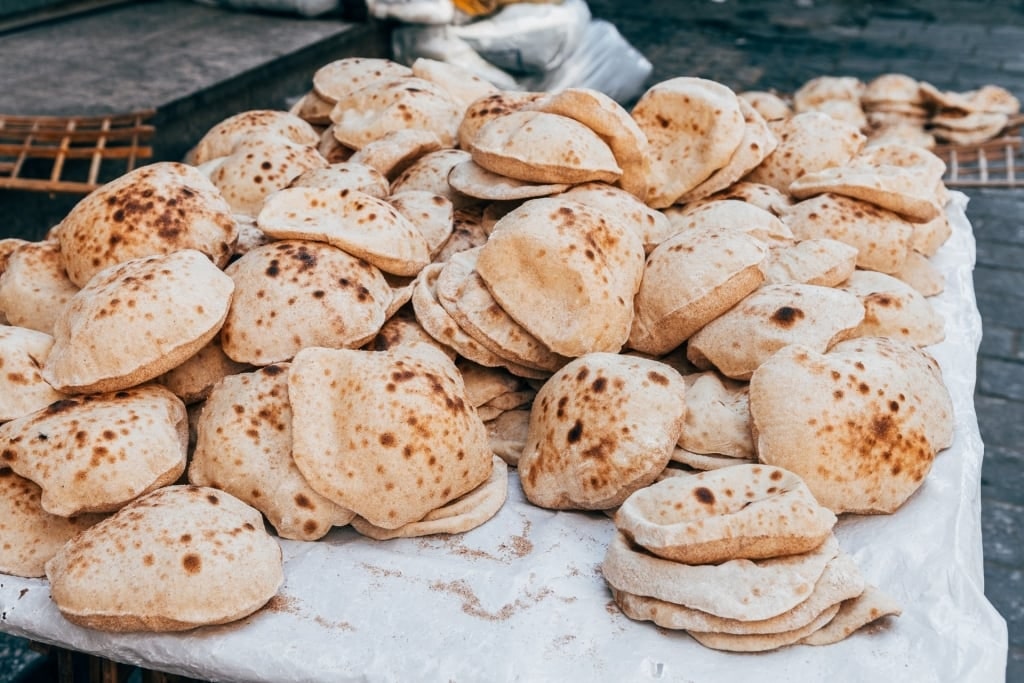
Aish baladi
The vast majority of Egyptians will enjoy it every day. Usually freshly made, it is eaten at breakfast, lunch and dinner.
Baladi is an important carbohydrate to supplement the vegetable-rich diet of the typical Egyptian. It is often used as a scoop when eating other food.
Practically every dish you are served in Egypt, with the exception of desserts, will be made better by baladi. It may well be the Egyptian food you enjoy most.
Sayadeya
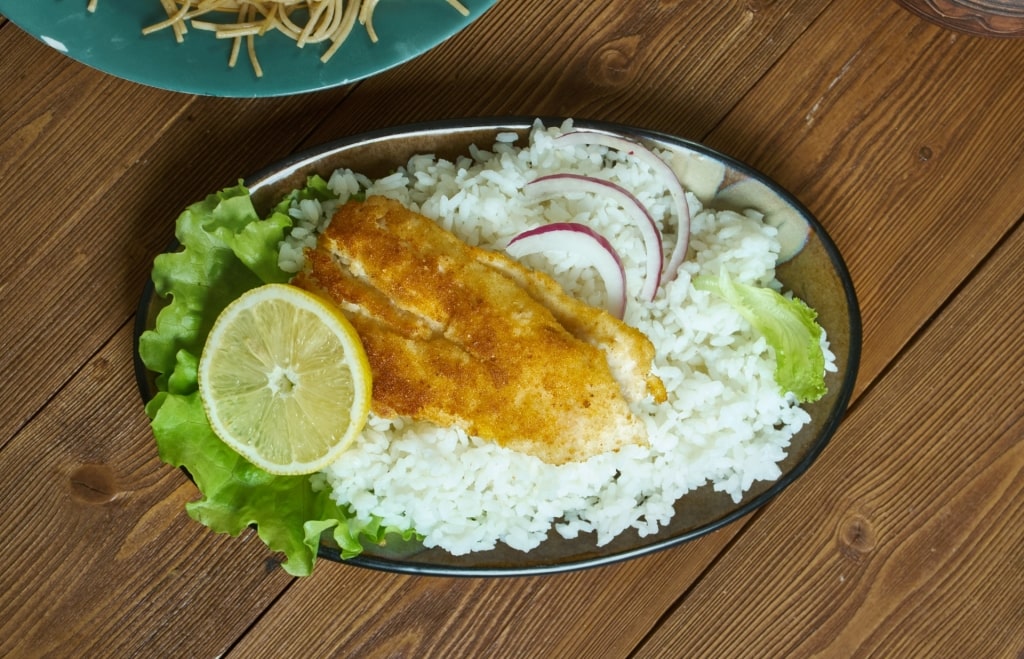
Sayadeya
Alexandria, or any other Egyptian coastal city, is one of the best places to try this Egyptian fish dish. It’s made with white fish such as sea bass or cod that is pan or deep-fried after being coated in spices.
It’s served on distinctive yellow “sayadeya” rice, mixed with caramelized onions and baked in an earthenware pot or tagine. The rice gets its color from spices such as turmeric, cinnamon, and ginger.
Although not so common in the rest of Egypt, carrots are also often added to the rice in Alexandria. The dish is served with a topping of toasted almonds and parsley, or even some shrimp.
The traditional side for this is lemon-rich tahini salad. That perfectly offsets the complex flavors of this delicious dish.
Mulukhiya
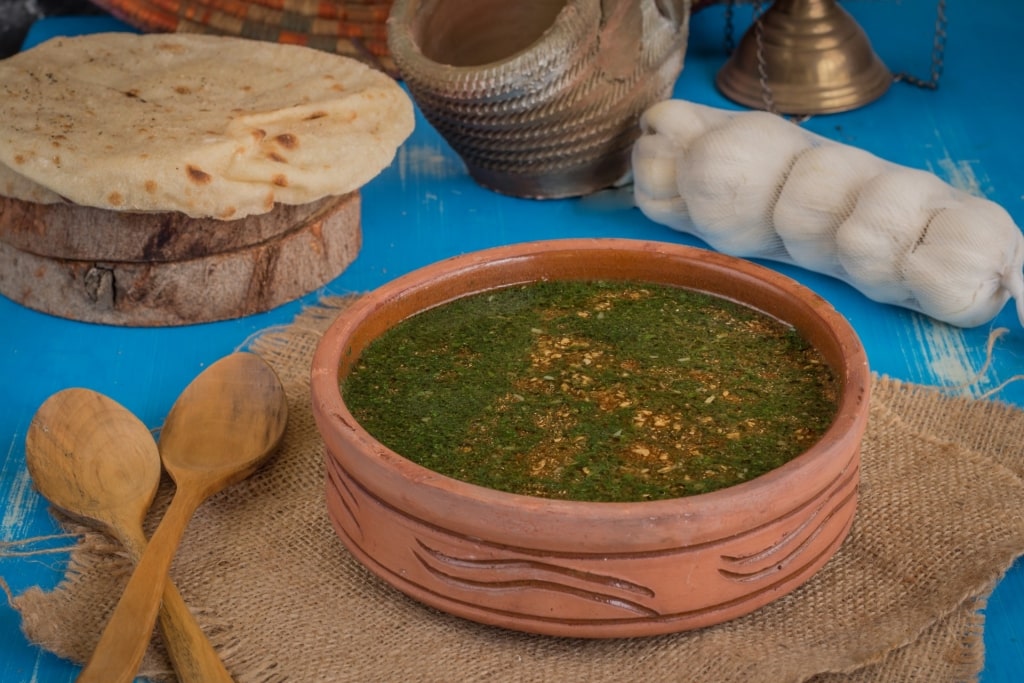
Mulukhiya
The national dish of Egypt, mulukhiya is basically a thick soup based on minced jute leaves. It dates back to the time of the pharaohs, with its name meaning “belonging to the royals”.
That name is thought to refer to the health benefits of jute, which was reserved only for royalty. While the older plants are tough and fibrous—hence their use in making rope and sacks—the young plants are tender and very nutritious.
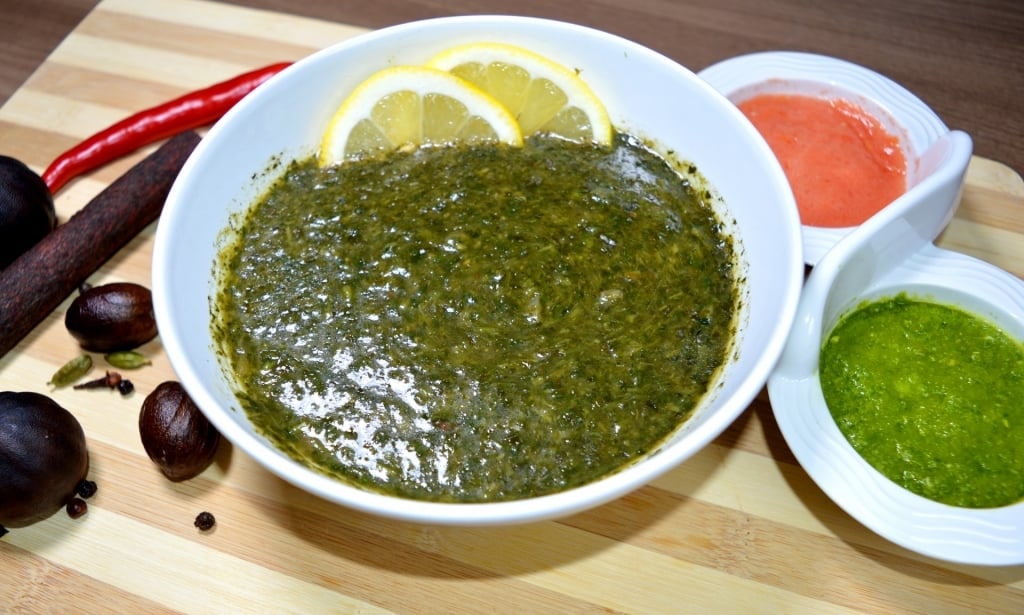
Mulukhiya
Mulukhiya recipes vary throughout the country, but the delicious Alexandrian version adds shrimp to the basic broth. The jute is bitter with a slimy, okra-like texture, but that’s balanced by garlic, meat stock (usually chicken), and spices such as coriander.
Rich in vitamins and iron, it’s usually served with white rice and warm baladi bread for dipping. A lemon wedge is a traditional garnish, with side dishes of pickled vegetables also common.
Kushari
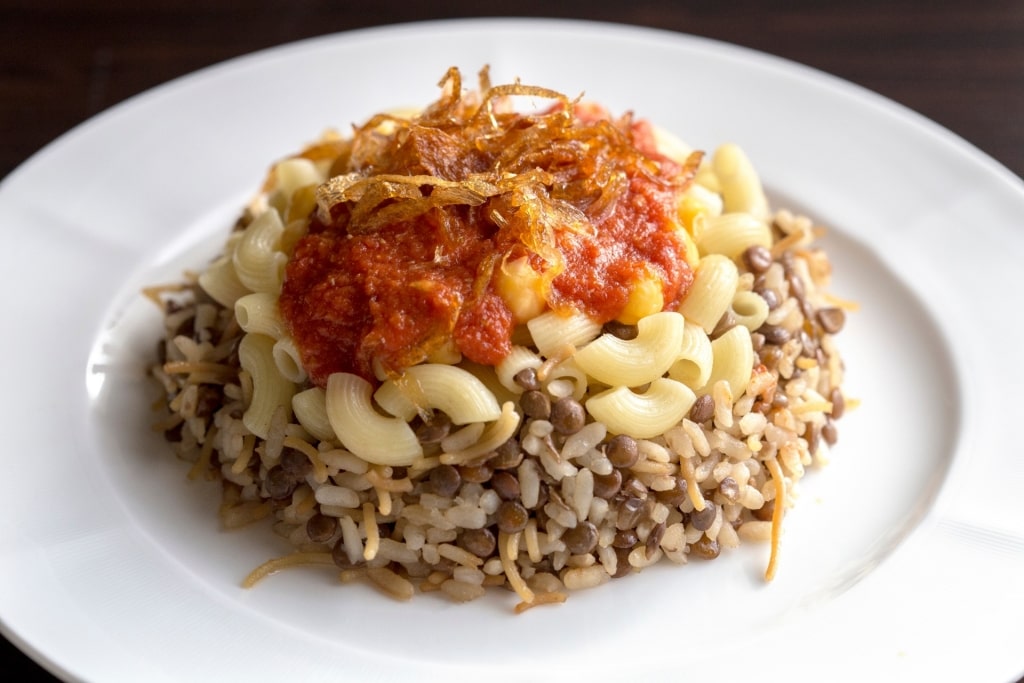
Kushari
Often called Egypt’s national dish (yes, another one), kushari is real comfort food. It’s a mix of lentils, rice, garbanzo beans and onions with a spicy, vinegary tomato sauce.
The dish is said to originate in India, with its name evolving from the hindu word “khichri”. It probably arrived in Egypt with the British in the late 19th century.
Whatever its origins, it’s now a firm favorite in Egyptian cuisine, and as far beyond as Saudi Arabia. The Alexandria version, however, is notable for using yellow lentils, with curry in the rice, while other regions often add macaroni.
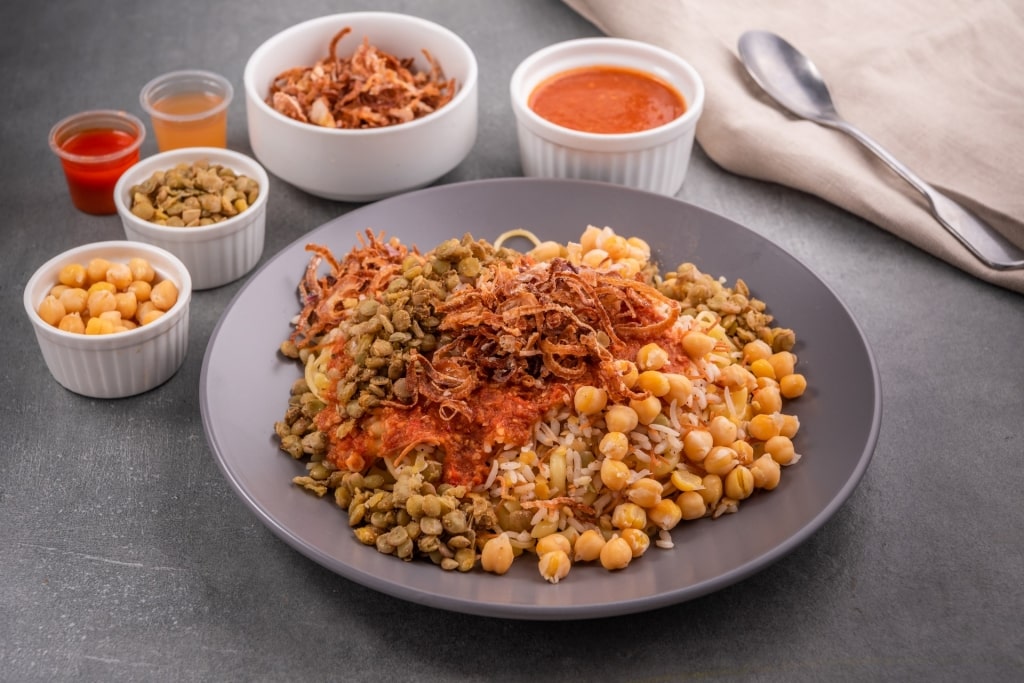
Kushari
In Alexandria, they also mix in fried, boiled eggs, and serve it with French fries. A sprinkling of crispy fried onions on top is an essential part of the flavor, wherever it’s made..
Originally a street food, and still very popular as such, kushari is now also a staple in restaurants. It might look a bit unappetizing on the plate, but is a great, filling option for vegetarians.
A traditional seasoning for kushari is mastic, a somewhat bitter tree resin. A green salad and the fresh mint tea that is an Egyptian staple can also add some pleasant contrasts.
Kebda Eskandarani (Alexandrian Liver)
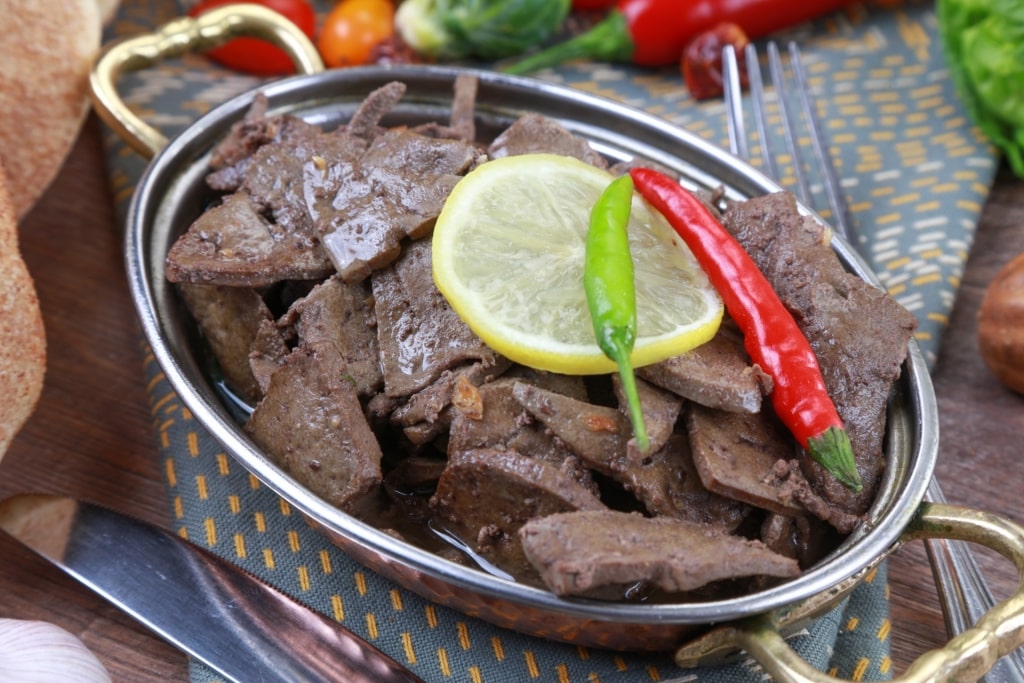
Kebda eskandarani
Liver is not to everyone’s taste but, if it is, you will love the Alexandrian version. If you don’t, you might change your mind if you’re brave enough to try this local favorite.
You will see kebda being sold throughout the city from street carts and in fast food outlets. It’s eaten in Vienna bread buns, with rice, or with a simple side salad and baladi bread.
Traditionally made with buffalo liver, it’s now more common to see beef liver. However, duck or chicken liver is also used.
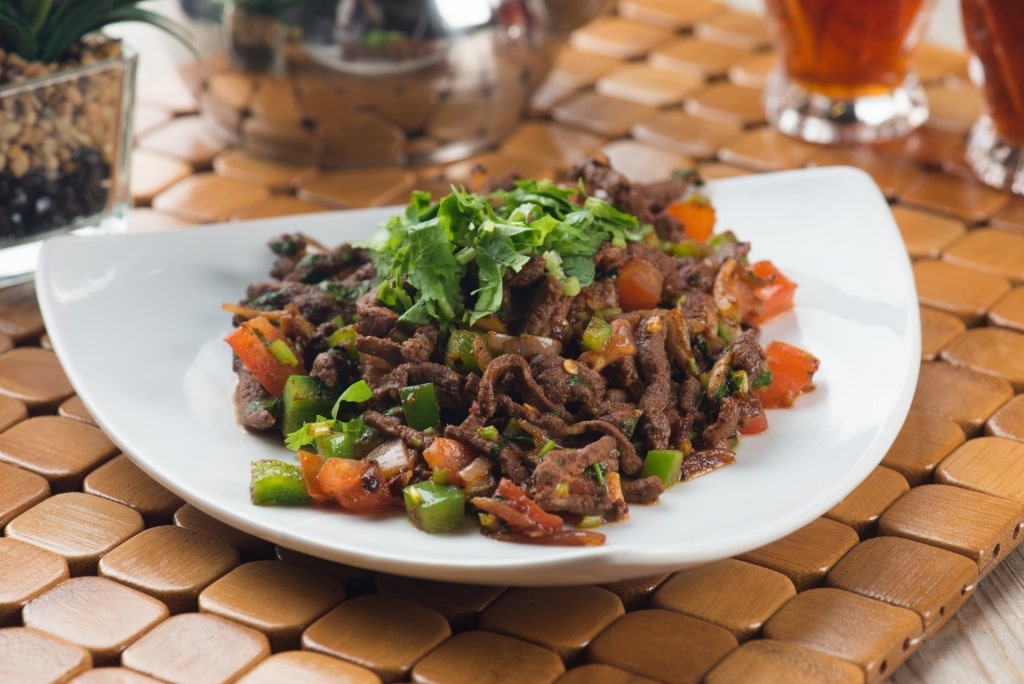
Kebda eskandarani
The basic recipe involves a marinade of ingredients such as garlic, cumin, coriander, and chili. It’s then fried in olive oil with onions, peppers and more chili.
A splash of lemon juice, and it’s ready to be served, topped with some fresh herbs and tahini sauce. Famous throughout the country, kebda eskandarani is a dish many Egyptian visitors line up to eat.
Kofta Kebab
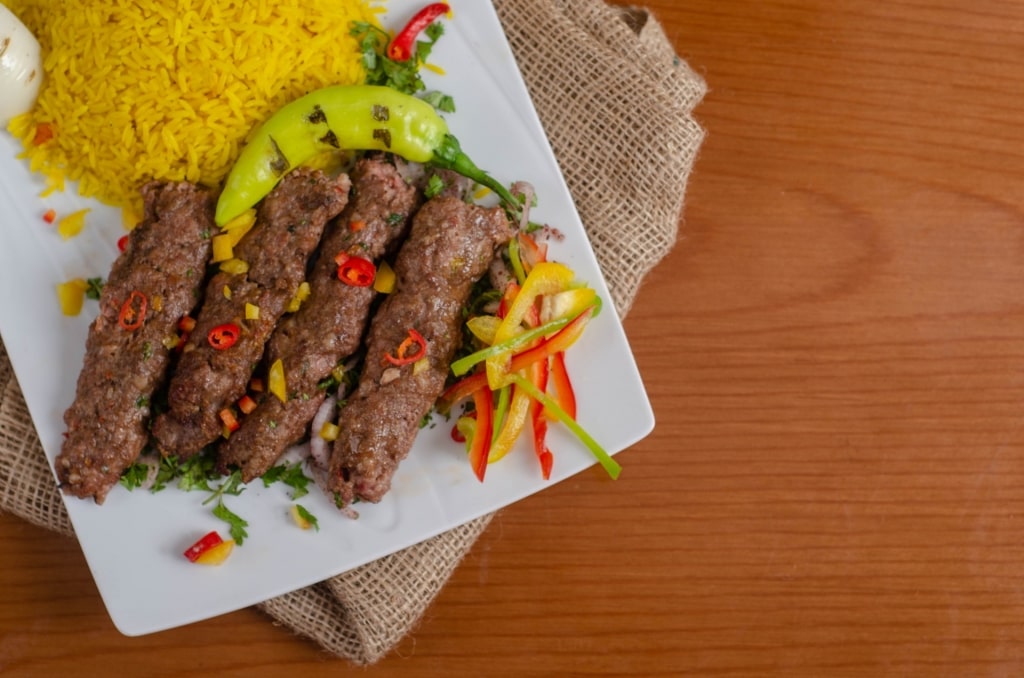
Kofta kebab
Many of us are familiar with kebabs from fast food outlets around the world. Minced meat—either chicken, lamb, or beef—is formed onto a skewer and grilled over charcoal.
They can also be made with fish or even vegetables. Unlike the more familiar Turkish style, in Egypt, spices such as cumin and paprika are added.
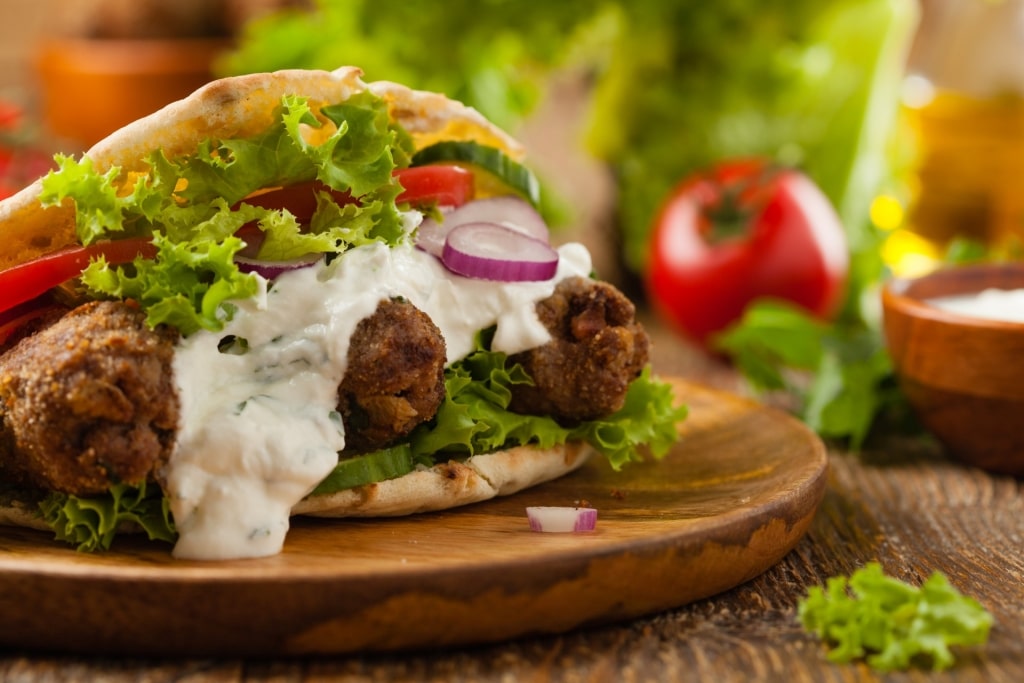
Kofta kebab
The kebab is served in baladi bread, with a salad and tahini, baba ganoush, or tzatziki. A very popular street food, you will also find them on restaurant menus, where they are more likely to be served with rice.
Om Ali
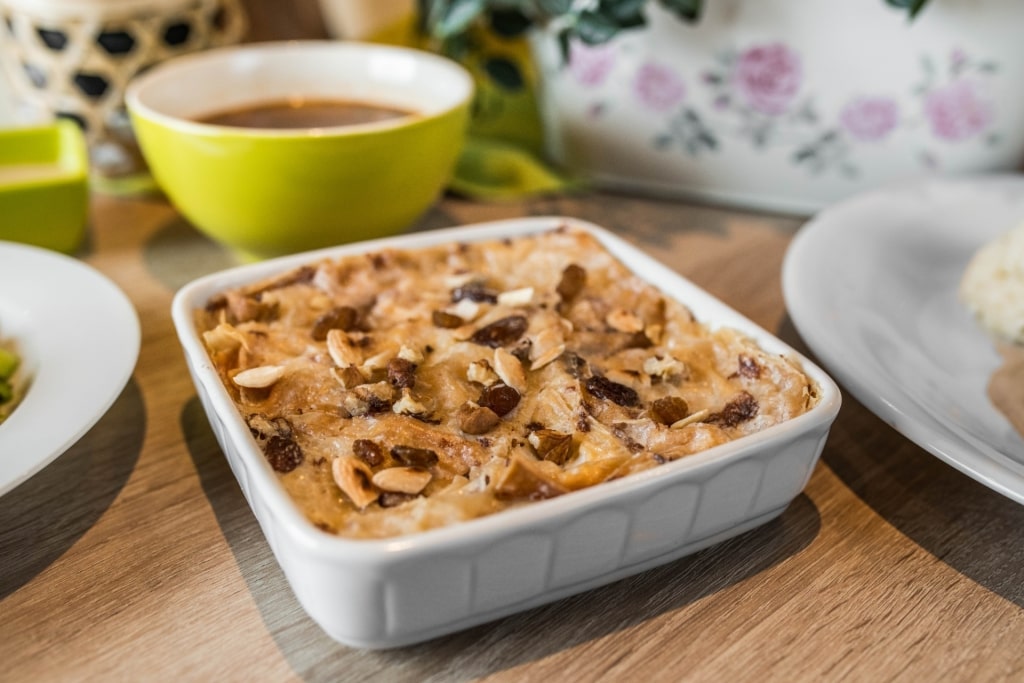
Om ali
Given how much Egypt loves its bread, it may be no surprise to learn that the national dessert is a form of bread pudding. Om Ali is made from bread or puff pastry soaked in milk and then baked until it has a tasty crust.
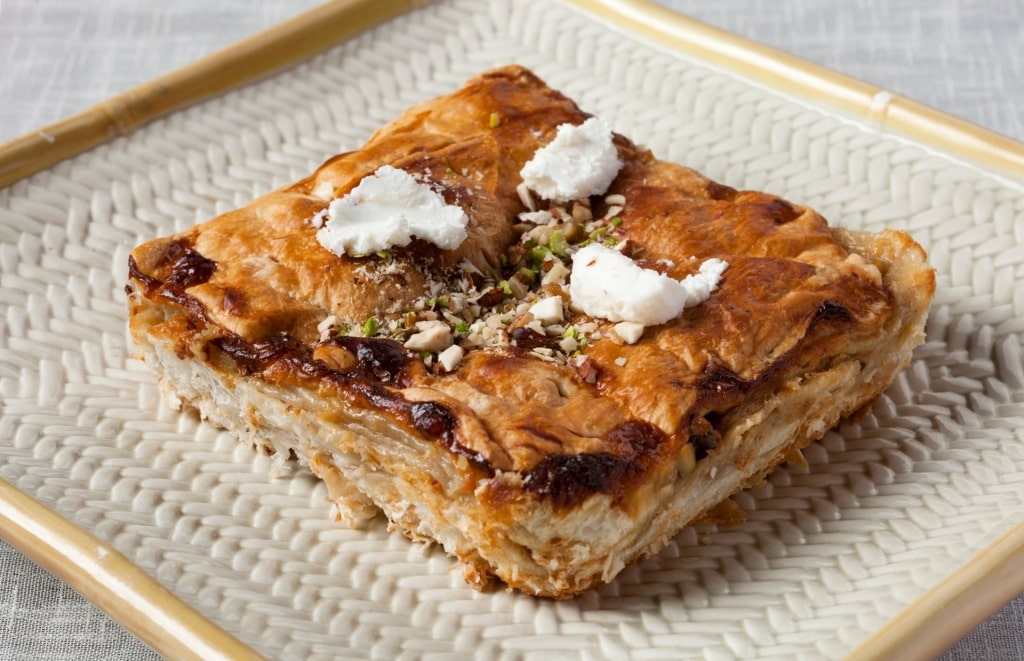
Om ali
Key ingredients in the bread mix are pistachio, raisins, and coconut flakes. Lots of sugar is a given, and cinnamon is sprinkled on top before baking.
The name om ali translates as “Ali’s mother”. It’s a tribute to a 13th-century sultan’s wife, who created the dish to celebrate the death of a rival.
Basbousa
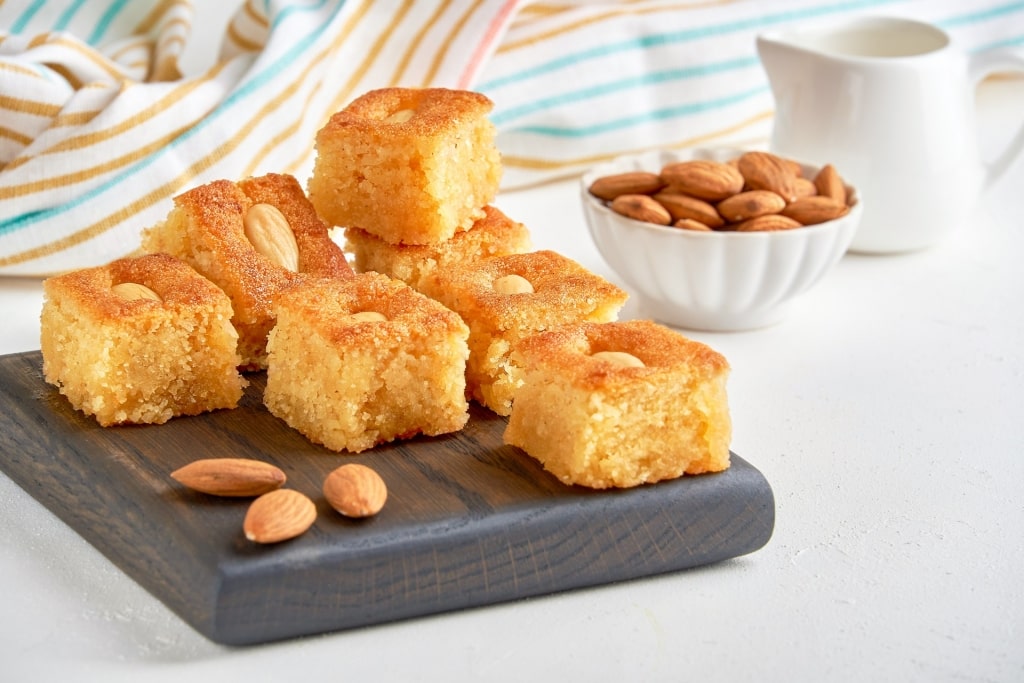
Basbousa
A sweet treat with roots in the Ottoman Empire, this cake is found throughout the Middle East under different names. Even within Egypt, it’s confusingly known in Alexandria as harissa.
Its base is a semolina batter made with milk or yogurt and egg that is baked, then soaked in a cold sugar syrup flavored with rose water, or lemon or orange juice. “Basbousa” comes from the Arabic word meaning “soaked”.
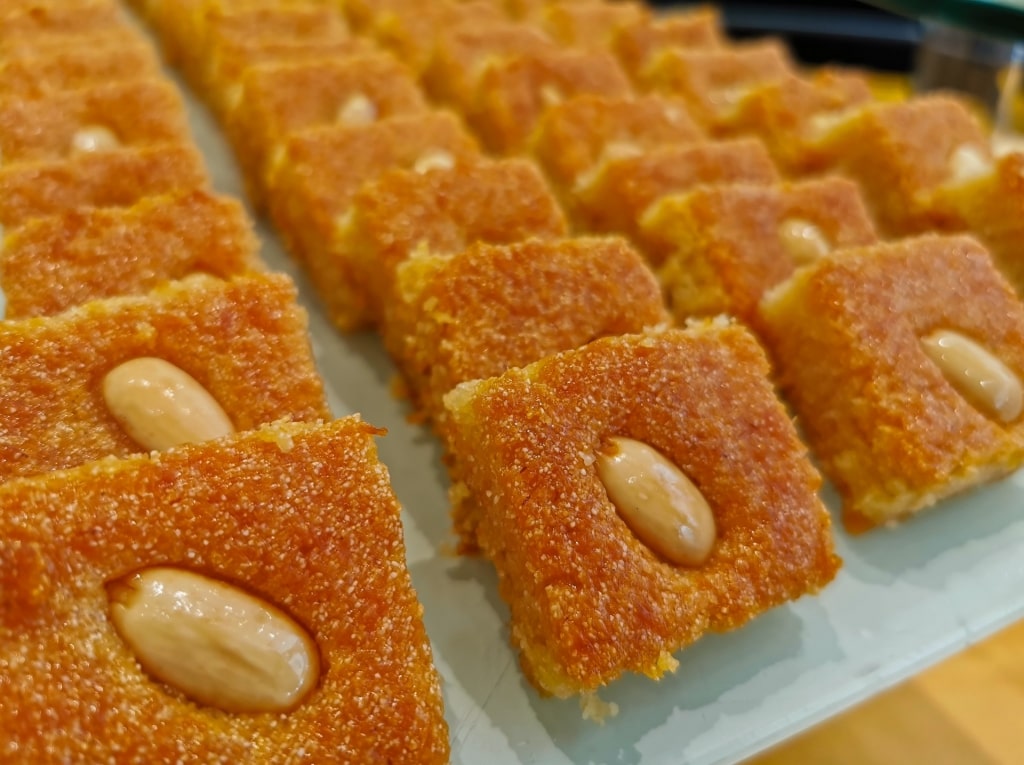
Basbousa
Basbousa is most popular during winter, when the sugar boost is most needed. It’s also an essential treat when breaking the Ramadan fast.
There are many variations on the basic recipe. For example, spices such as cinnamon or cloves can be added, and a topping of toasted almonds is common.
Alexandria’s harissa (not to be confused with the North African chili paste) is often topped with hazelnut. To confuse things even more, basbousa in the port city is a similar dessert made with coconut in the base.

Alexandria Harbor
Has this guide to the ultimate Egyptian foods to try given you an appetite to visit? Browse our cruises to Alexandria and book your Mediterranean getaway today.
